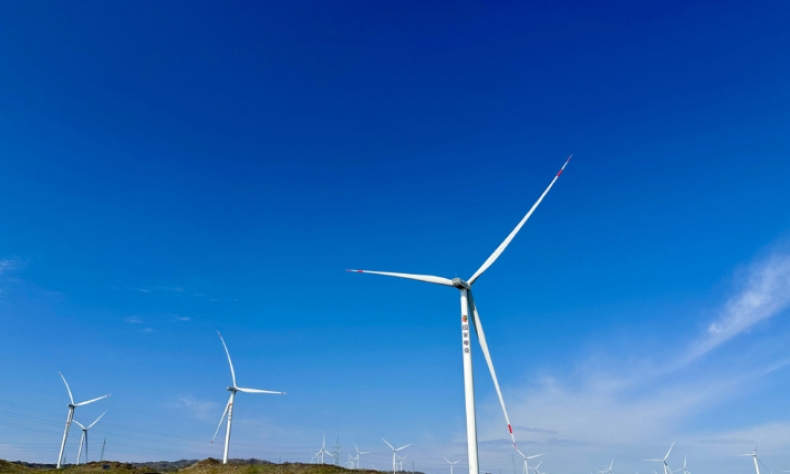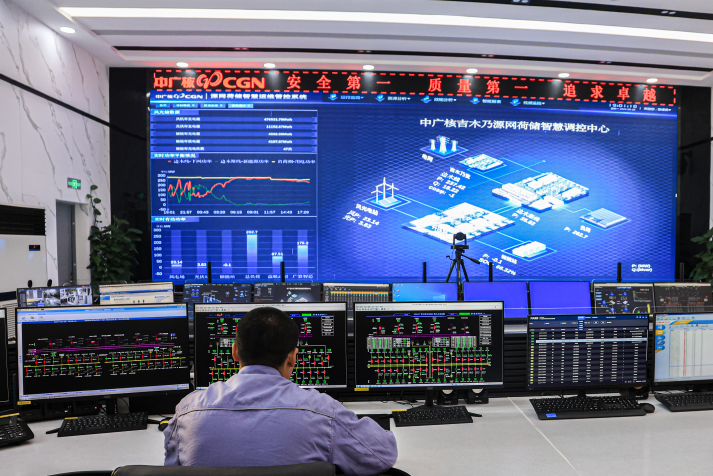The Rise of Altay’s Clean Energy Sector

Looking ahead, Altay will expand its clean energy portfolio by integrating wind, solar and hydropower with cutting-edge storage solutions.
On the rugged terrain of Altay Prefecture, along the northwestern frontier of Xinjiang Uygur Autonomous Region, China’s green energy revolution is unfolding.
Located on China’s border with Kazakhstan, Altay serves as an important junction along the northern stretch of the Silk Road Economic Belt, a major component of the China-proposed Belt and Road Initiative to boost connectivity along and beyond the ancient Silk Road routes.
The prefecture is home to an ambitious integrated project that harnesses wind and solar energy, enabled by energy storage solutions.
This project places Altay at the heart of the national strategy to capitalize on the untapped potential of deserts and barren lands for renewable energy production.
Balancing with innovation
In Jeminay County, a three-hour drive west of Altay City, capital of Altay Prefecture, the landscape is dotted with wind turbines and photovoltaic panels, a sight capturing the unbridled potential of renewable energy. In August 2022, China General Nuclear Power Group (CGN) launched an integrated project within the border economic cooperation zone, combining power generation, grid management, load balancing and energy storage, setting a new standard for sustainable energy development.
“The project is nestled in the wind zone of the Irtysh River Valley of Altay, which offers superior wind energy resources and natural geographic advantages for developing an integrated generation-grid-load-storage project,” Xu Yong, Deputy General Manager of Operations at CGN New Energy Investment (Shenzhen) Co. Ltd.’s Xinjiang subsidiary, told Beijing Review.
Traditionally, power grid systems operated on a generation-following-load model, often leading to supply-demand imbalances and challenges in grid safety, particularly with the increasing use of renewable energy sources, known for their volatility and unpredictability.
To address these challenges, an innovative “generation-grid-load-storage” operational model was purposed.
This comprehensive approach to power management ensures an accurate balance between supply and demand, allowing excess electricity to be stored for future use. This model not only guarantees a stable and reliable power supply under different environmental conditions but also maximizes clean energy use, enhancing the overall efficiency of the power system.
The project, with a capacity of some 400,000 kilowatts (kW), including 390,000 kW from wind power and 10,000 kW from solar power, uses large lithium-ion batteries for energy storage. The wind turbines, standing an impressive 110 meters tall, serve as monumental symbols of clean energy. Xu noted that each rotation of these turbines generates approximately 11 kilowatt-hours (kWh) of electricity, enough to charge a small electric vehicle with just six rotations.
Having been successfully connected to the grid by the end of 2023, the project is expected to produce around 1.26 billion kWh of clean electricity annually. This output is projected to save more than 380,000 tons of standard coal and reduce carbon emissions by around 1.06 million tons.
“Jeminay County has vast potential for wind and solar energy development, with over 1,000 square km available for wind energy exploitation and a solar power capacity exceeding 20,000 megawatts,” said Ma Qiang, Director of the Jeminay County Development and Reform Commission.
To date, the county has achieved several milestones. The completion of seven wind and solar power plants, with a combined capacity of 1.14 million kW, has doubled the county’s installed capacity since 2021, marking a historic leap in clean energy development.

Harnessing hydropower
Nestled deep in the mountains, some 40 km northeast of Burqin County in the Altay region, a groundbreaking energy project is underway. The Xinjiang Burqin Pumped Storage Hydropower Station, with an investment exceeding 10 billion yuan ($1.4 billion), began construction in July 2023. This ambitious project represents a big step forward in the use of renewable energy resources.
The station ingeniously stores excess energy in a reservoir system, which consists of upper and lower reservoirs, a water conveyance system, and an underground powerhouse. It boasts a total installed capacity of 1.4 million kW.
Zuo Xingcheng, the Construction Management Department Manager at Xinhua (Burqin) Pumped Storage Power Generation Co. Ltd., likened the project to a “super power bank.” Capable of storing up to 8.4 million kWh of electricity daily, the station can provide energy to cope with demand spikes. Each year, it is expected to save 926,000 tons of standard coal and slash carbon dioxide emissions by roughly 2.79 million tons.
Experts consider pumped storage power stations pivotal to the development of green, low-carbon and clean energy. They are valued for their maturity, economic viability and scalability. Zuo highlighted the many benefits they offer, including longevity, high energy conversion efficiency, substantial installed capacity, agility, rapid response, and extended discharge duration. These attributes are essential for optimizing the power grid structure, easing grid regulation and increasing the consumption of local wind, photovoltaic, and other renewable energy sources.
Altay Prefecture, rich in solar, wind and hydro resources, is recognized as a pivotal clean energy reserve and development zone in Xinjiang, with a total capacity surpassing 526 million kW. This diverse mix of resources underscores Altay’s potential as a central hub for clean energy projects.
According to the Altay Development and Reform Commission, the prefecture produced an impressive 77.78 billion kWh of electricity in the first seven months of this year. Of this output, 92.7 percent came from green energy sources, with more than half of it transmitted beyond the region. This feat has positioned Altay as a major clean energy export hub within Xinjiang.
“With a strategic window for clean energy development, we will further accelerate our integration into the autonomous region’s energy strategy and the construction of new energy and new material industry clusters,” said Wang Shaojie, Deputy Director of the Altay Development and Reform Commission.
Looking ahead, Altay will expand its clean energy portfolio by integrating wind, solar and hydropower with cutting-edge storage solutions. “Our goal is to build a multi-million-kW green energy base by the end of 2025, solidifying Altay’s leadership in renewable energy development,” Wang added.
 Facebook
Facebook
 Twitter
Twitter
 Linkedin
Linkedin
 Google +
Google +










